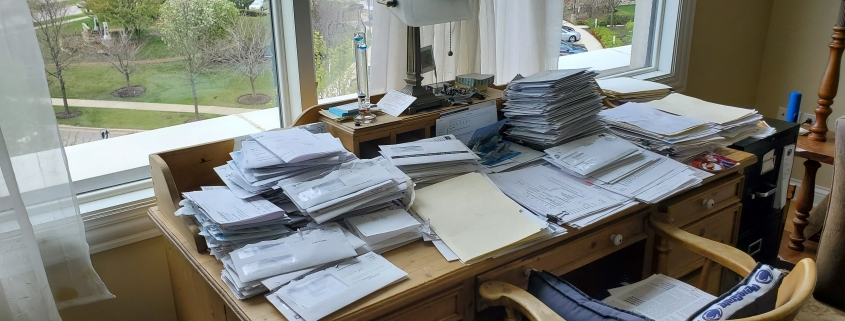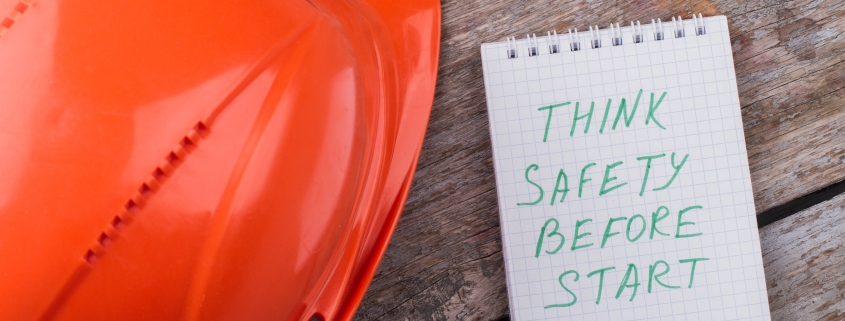5 Reasons Paper-Based SWMS are a Safety Management Risk
It’s widely known that Safe Work Method Statements (SWMS) documents are used to identify and assess:
- All high-risk activities
- The risks connected with these activities
- The actions taken to control these risks, and
- How these actions will be implemented and reviewed
There is endless content out there to explain the “What” questions when it comes to SWMS, but not many address the “How”. In this article, we will introduce you to why the process you follow is important and how using a paper-based safety management system is a risky choice for workplace safety.
In Australia, WHS regulations require that all high-risk constructions activities follow a SWMS. Any activity that doesn’t should be stopped immediately. It can only keep going once it can be done according to the SWMS. If it isn’t stopped, your company is at risk of its workers getting injured. Not to mention huge WHS non-compliance fines. You really don’t want that!
So, how can you make sure your SWMS process is bulletproof and complies with WHS regulations? And your workers are kept safe?
SWMS have traditionally always been paper-based. But paper-based safety management isn’t reliable enough in the modern day. You can’t rely on paper to make your workplace compliant and safe anymore. Here’s why paper-based safety management is just too risky – and how safety software and a digital SWMS can solve these problems.
5 Risks of Paper-Based Safety Management
- Most documents are not specific enough, or lack the ability to include details specific to the job being performed
- Paper documents can get lost and physically degrade overtime (especially when exposed to weather)
- Creating new documents is time consuming and labour intensive
- No way to collaborate from different locations
- Damages safety culture when filling out the paper form presents too much friction
Not Specific Enough
Paper-based SWMS templates, whether free or paid, aren’t specific enough to apply to the task at hand. Even if it is an industry specific template, there is simply too many variations from the ideal environment and the real environment. The ways one firm might reduce risk for a task might not be possible at another, or at least not the most effective way. Risk is fluid and a variable, not rigid and binary.
This is a big problem. It means that you have nowhere to capture information about the activities and their specific details as they pertain to your business.
We know what that means – leaving out details can get you into trouble. If your SWMS isn’t specific enough to your actual company and the details of its specific activities, you risk facing WHS non-compliance charges. But don’t panic. Safety software can help.
With safety software, you can say goodbye to paper-based templates and hello to digital SWMS. Digital SWMS templates are equipped with the features and data-entry fields that you need to record every important detail. Whether it’s adding customised checklists, signature boxes, photos, videos or custom risk and control measures, safety software has you covered with your very own customisable digital SWMS. Using digital SWMS can help you increase the specificity and accuracy of your documents.
Paper Degrades and Is Easily Lost
Losing WHS-related paperwork is never okay. It doesn’t matter if the paperwork is for an active or long-finished job. It is best practise to hold onto your SWMS for 5 years. If you don’t, you may fail your future WHS audits. And that means tens of thousands of dollars in fines and even imprisonment (in the worst of cases)
Clearly, it’s so important that you ensure your safety records don’t get lost, become unreadable, or get damaged over time. But paper-based safety management makes managing that an ever increasing headache. So, what to do?
Invest in quality safety software that is right for your needs. By using safety software, you can make sure that all your documents are recorded digitally and are safely stored in the cloud. Digital SWMS, digital job safety analyses, digital risk assessments, you name it. It will all be kept right there for any team member to use or auditor to see and give you a big tick. You’ve passed the test!
Paper is Just Too Hard
Here’s a familiar scenario for you. Your principal contractor has spent hours putting together the SWMS for a big job. They are frustrated by this never-ending process. A big chunk of their day has been taken up by running between the office and the worksite, photocopying documents, getting signatures from workers scattered around the site, the list goes on.
On top of that, once they’ve done all that work there is only a paper version of the SWMS filed in a clunky binder. It cannot be easily accessed by workers onsite and it may be hard to find. Each step creates the risk that your workers will ignore the SWMS, or they won’t be able to find it, or they’ll have to stop work to go looking for it. Because of this, they may decide to do the work anyway and may get hurt. Paper-based safety management is just too hard.
You can bypass this whole struggle by using safety software. All safety management can be done straight from your mobile phone. Everyone can access a digital SWMS, anywhere and anytime. With safety software, making new hyper-specific SWMS documents is a breeze; you’ll never be blocked from starting on a site because you forgot or lost the paperwork; and you’ll never have to waste time driving between the office and the worksite for signatures and updates. Best of all, safety software lets you manage WHS compliance proactively. So, you’ll never have to worry about failing a safety audit due to your process being inadequate at preventing future incidents.
Collaboration is Difficult
Paper-based safety management makes communication between workers, clients, and sites difficult. But without good communication, you can’t create a good SWMS! Every SWMS should involve the principal contractor, sub-contractors, managers, builders, and other workers.
Think about it. If you want a SWMS that is understood and followed by everyone onsite, you need to involve everyone in its development. Otherwise, what’s the point?
Safety software eliminates this challenge and gives all stakeholders the ability to be part of the process. Why worry about running around with a paper copy, when you can have a digital SWMS that everyone can access from the palm of their hand? Safety software means real-time communication and collaboration. It’s super convenient for both workers and clients and improves efficiency. With one tap of a button, digital forms and records can be sent to contractors, subcontractors, clients, and more!
Damaged Safety Culture
One of the biggest risks of paper-based safety management is the most hidden. It happens gradually and isn’t always obvious, but it can do a lot of damage. We’re talking about the damage to your company’s safety culture. But how does paper damage culture?
It’s simple. Paper-based safety management is, generally speaking, inconvenient. And when workers begin to see it as too much of a hassle, safety culture goes out the window. Safety is not prioritised. Shortcuts get taken, and people get hurt.
Safety software gets rid of this problem. With safety software, you can promote a strong safety culture and keep your workers safe. Forget the inconvenience of paper and having to round up the whole team every time a new hazard comes up. Now, you can keep everyone in the loop with notifications and alerts right to their phones. And with no more hassle, you can rest assured that safety will be prioritised and not seen negatively. Safety software lets you create a safe environment with a strong safety culture for all your workers.
Conclusion
If you have had enough of the safety and non-compliance risks that come with paper-based safety management, maybe it is time to consider a digital solution. At SafeWorkPro, we are on a mission to make safety simple in your business.
The SafeWorkPro Crew Edition allows you to create, distribute, fill and store digital SWMS with no upfront or recurring fees. Pay only 50c for each new or modified SWMS!
Say goodbye to risky paper and hello to safety software with SafeWorkPro.
More From The SafeWorkPro Blog
Work Method Statement Example Free Download
Running a construction business is a time consuming and costly task, so finding areas where efficiency can be improved is vital. Getting an affordable safety method statement complicates this but as technology develops so too to the options available to construction managers. The problem with a typical safe work methods statement template is that it […]
OHS Legislation Explained
Interpreting complicated occupational health and safety laws is a hassle that many small and large businesses struggle to find time for. This presents issues because with a range of various penalties and regulations at stake, compliance with safety laws in the workplace is not to be trifled with. OHS legislation Australia is made up of […]
Free SWMS Template
Are you looking for a free SWMS template? We got you. You can download one on our resources page. This is the template that is found on page 42 of the Construction Work Code of Practice that was published by Safe Work Australia. So, this template is correct and will help with your safety in the work place, as […]








